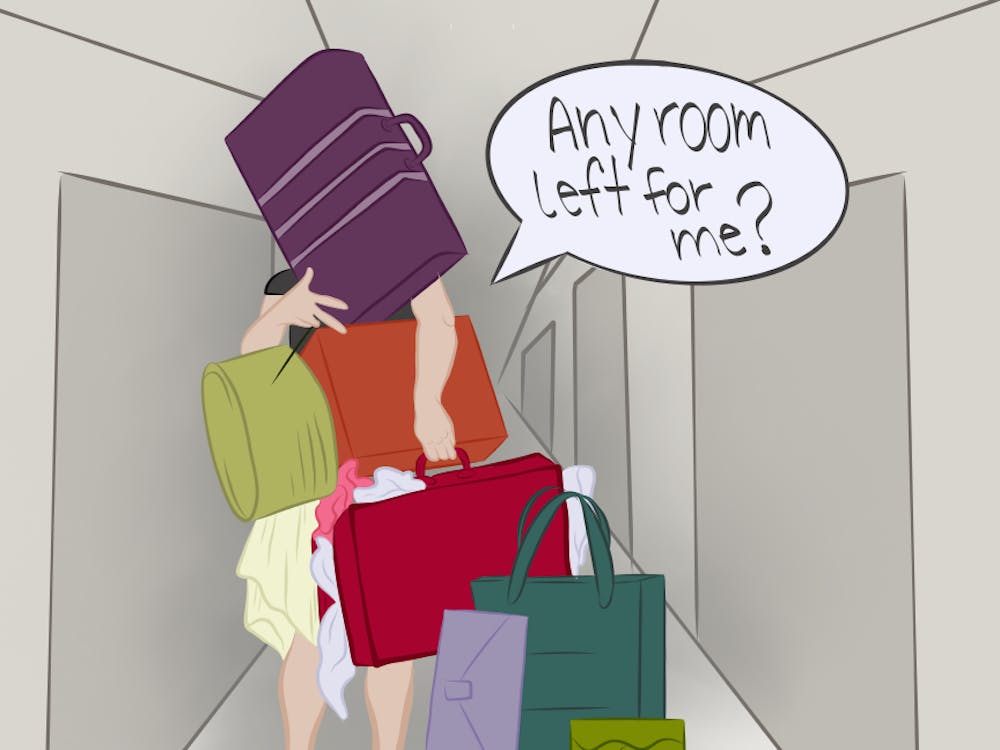This year's incoming class stepped onto a campus full of disarray. Rising housing costs and construction delays have left the USC housing scene in shambles. As each school year passes, seemingly more and more apartment buildings are erected and open their doors with shiny, state-of-the-art accommodations, while first-year students are required to live in old, outdated dorm rooms that rarely see improvements.
While it's fantastic that upperclassmen are provided with this extensive list of options, USC's focus on upperclassmen seems to be at odds with the current reality of the student housing situation. The class of 2029 comprises of nearly 8,000 first-year students, the largest incoming class in USC history.
Gateway 737 is the latest example of a concerning question: has USC chosen extravagant projects over the minimum living standards of its first-year students? Located on Gadsden Street near Colonial Life Arena, the building offers nearly 1,000 beds across 15 unique floor plans while offering amenities such as a resort-style pool, exclusive study spaces and a fitness center.
The housing crunch has only deepened with construction delays and half-finished renovations. Thornwell Residence Hall's renovation was supposed to be complete by the beginning of the semester, yet it remains incomplete, effectively leaving the class of 2029 out to dry.
This development raises concerns about USC's commitment to funding new upperclassmen housing projects through affiliated foundations and their timely completion, while neglecting freshman living situations.
The planned demolition of McBryde Quadrangle, the formerly all-boys dorm, was supposed to take place in summer 2025. However, it still stands, serving as a monument to the university's almost comical approach to first-year housing. For the first time, female students lived in the building, segregated from their male peers on a hall-by-hall basis, with extra beds added in order to accommodate the large influx of new students.

For many of these students, it feels like a punch in the gut from the university. With college tuition costs not only increasing in the United States but also here at USC, it would seem reasonable for incoming students to expect adequate housing with modern features and living spaces, something the university has notoriously not provided to all students in recent years.
This fall, students who were assigned rooms at the brand new Thornwell Residence Hall had to begin their semesters living in McBryde, with a planned relocation taking place sometime within the next few weeks. Although, the timeline for Thornwell’s completion remained unclear until very recently.
The uncertainty of the situation diminishes the supposed benefit of a "temporary" setup and increases stress for first-year students. It's important to consider the impact such a situation can have on these students' first-year experience.
In a statement, USC Internal Communications Manager Collyn Taylor said, "We understand the need for more on-campus housing, which is why we've committed to adding over 1,000 beds to the heart of campus with a new residence hall where McBryde currently sits.”
Prolonged occupation of an outdated dorm widely criticized for its dated decor and poor cleanliness can potentially undermine students' mental and physical well-being, as well as foster feelings of resentment for the university's seeming lack of funding and care for first-year student housing. This predicament serves as a seriously jarring contrast for a school that loves to boast that it provides the "No. 1 first-year experience."
USC's shiny new housing options for upperclassmen only highlight the contrast between its attention to detail when it comes to older and younger student housing. Temporary options and cramming large numbers of students into buildings that have stood since the 1950s not only leads to stress and poor mental health among the affected students but serves as a comical reminder of the shortcomings of the university's housing system and philosophy.
If you are interested in commenting on this article, please send a letter to the editor at sagcked@mailbox.sc.edu.

